Updated: 25-Aug-2020
Honda motorcycle and automobile engines have been adapted for aviation in multiple occasions.
-The 4-cylinder, 750 cc motorcycle engine was converted for experimental motorgliders, and gave 60 hp. The rpm was reduced to half by means of belts and pulleys.
-For example, from the "Odissey" 250 cc motorcycle engine that gave 23 hp an adaptation was made for the ULM "Kasperwing 1-80".
-Because of its architecture, the 2-stroke, single-cylinder CRT5R engine was perhaps the most capable one for use in small appliances.
-This particular model was successfully marketed in the USA for this job.
-It gave 28 HP at 9,000 rpm, but with V-belt type reduction".

“Sandpiper-Honda”
-Engines of the Honda "Goldwing" have also been adapted for aviation by Sandpiper Air Inc. (see). These were the models 1000 with 83 HP and 1200 with 100 HP.
-The Mini-Merlin GRP-125 version, uses the 125 hp, 4-cylinder Honda engine from the Prelude car model, modified by HAPI that was later acquired by Mosler.

“Honda-Prelude”
-R. Parodi converts the 4-cylinder Honda HP-45. This engine was air cooled and gave 45 hp.
-In 1970, he did the same with the HP-60 that gave 60 hp.
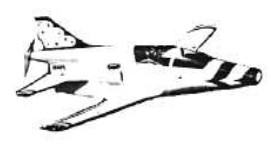
“BD-5 with Honda engine”
-The Honda Civic engine was used in the well-known BD-5 micro-plane. The reached speed was between 150/160 mph.
-Honda is currently building turbine engines for its HondaJet business jet.
-The first prototype was the Turbofan HFX-01, used as an experimental engine for later developments. It only delivered 1,800 lbf of thrust.
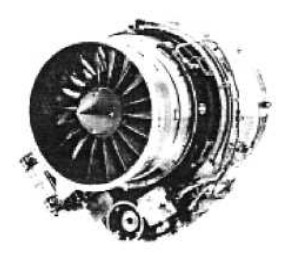
“HFX-01”
-The HFX-20 was the second prototype, and was made with the experience gained with the HFX-01. This one already gave 2,205 lbf of thrust.
-It had two shafts and few moving components. As it had a corrugated outlet nozzle, a very quiet engine was made.
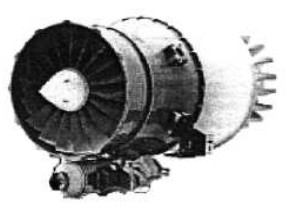
“HFX-20”
-More advanced and convenient was the HF-118 with 1,670 lbf with the Hondajet as its final destination.
At the end of 2004 a "Joint Venture" was formed between Honda Motor Co. and General Electric Transportation in the USA to develop and certify the HF-118.
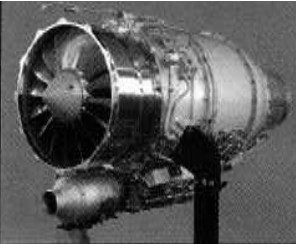
“Honda-GE, HF-118”
-The HF-118 is the basis of a new Honda Turbofan-engine family for the range of 1,000 to 3,500 lbf of thrust.
-They are working to achieve that all these engines will have a TBO (Time Between Overhaul) of 5,000 hrs.
-In March 2003, Honda made another "Joint Venture" with Teledyne Continental Motors of the USA to create new generation of piston engines for aviation.

“Honda-Continental”
-These 4-stroke, water-cooled, FADEC engines, could use unleaded petrol from 93 Oct. MoGas, and 100 LL AvGas.
-The first 4-cylinder model gave 225 hp.
From Appendix 6: From the collaboration with Teledyne Continental Motors of the USA, a water-cooled, horizontally-opposed, four-cylinder engine was designed. It was capable of using automotive lead-free fuel (in addition to the aviation 100 LL).
-See Continental and Teledyne Continental.
-The Honda Civic car engine has also been adapted for aviation, just like the Honda Acura V6.

"Honda Civic clearly on a Cessna"
-It had toothed belt reduction gear where the tension pulley has an extreme position.
-The HF-120 has been a natural evolution of the HF-118.
-This new engine has been developed jointly with GE. It incorporates Honda's traditional philosophy regarding innovation and General Electric's rigorous design and standardized tests. The Joint Venture dates from the year 2004.
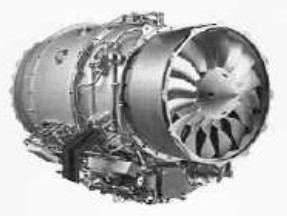
“GE-Honda HF-120”
-The delivered power is slightly higher than the HF-118, mentioned in the main text, currently giving 2,050 lbf of thrust. So it is a small turbofan intended for new business VLJs, such as the HondaJet, a twin-engine aircraft of this category.

“HF-120, cutaway”
-The by-pass ratio is 2.9 and the pressure ratio is 24. However, it only measures 21 inches in diameter and 44 inches in length, weighing less than 400 pounds.
-It has double FADEC control system, low noise and emissions, reaching the CFR36 Stage 4 standard.
-Other interesting data is its ample time of operation between general overhauls (TBO) of 5,000 Hrs. (The average for this type of engine is 3,500 hrs, except perhaps the RR Viper with 5,000 hrs as well).
-The fan has high efficiency blades, wide-chord, and high resistance to FOD (Foreing Object Damage). It has two LP compression stages rotating at fan speed.
-It is followed by a single-stage, single-face HP centrifugal compressor, made of titanium.
-The combustion chamber is annular and reverse flow, like most current engines.
-The first HP turbine stage efficiently uses the gases from the chamber.
-Followed by the double LP turbine, with two counter-rotating stages.
-Honda automobile engines such as the V6 with displacements of 3.5 and 3.7 L, and powers of 240 and 270 hp respectively and both at 5,400 rpm have been adapted for aviation by the American Vesta Inc. (see). When supercharged, the power went up to 300 and 320 hp.

“Honda V-6 engine”
-Russell Sutton from Australia has built a 9-cylinder radial engine based on the cylinders of the Honda XR-600 motorcycle engine.
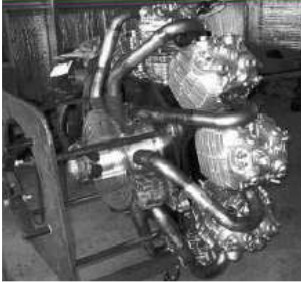
"Radial engine based on Honda cylinders"
-The engine includes parts from other vehicles such as Holden Commodore pistons. Cranks and other parts such as the oil pump from Nissan, and throttle control, butterfly valves, etc. from a 5.7-liter Chevrolet engine.
-The engine has a total displacement of 7,893 cc. It has a Nissan electric starter.
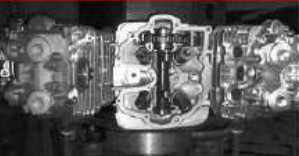
“View of a cylinder head”
-As we can see that there are four valves per cylinder head. They are inclined as there is a hemispherical combustion chamber. It has a camshaft on the head, therefore there is no cam plate in the center of the engine. But there is a group of gears.
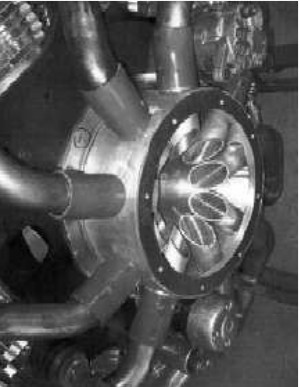
“Air intake details”
From Appendix 9: A cutaway drawing on the HF-120 engine has been located. It has explanations that clarify the internal details.
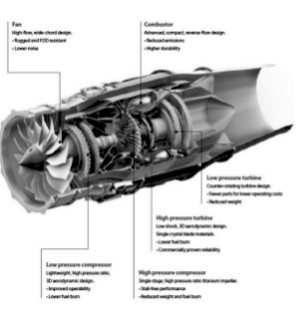
“Honda HF-120”

"Photo of the same Honda brochure"
-A Honda V6 engine, 3.5 L, has been adapted to be used in aviation with its gearbox. It is the one chosen in New Zealand by Pioneer Aero Ltd for their Titan T-51 plane, which they are building.

“Honda 3.5 in shipping crate”
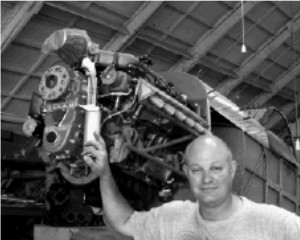
"The same Honda installed"
-Below we show a Honda industrial-motorcycle engine adapted for aeronautical use. Unbeatable appearance, with gearbox and four-blade propeller.
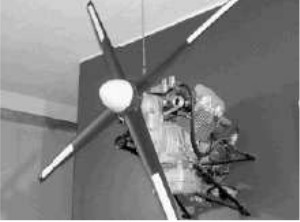
"Honda engine in an exhibition"
-Another Honda-engine that is adapted for aviation is shown below. It has been carried out in Russia.
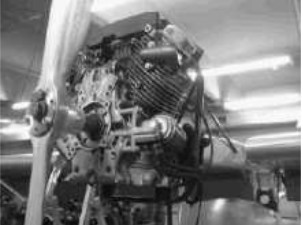
“Industrial Honda on a ULM”
-It is a modified engine based on the 650 cc model that has been installed on the Russian DAR ULM.
From Appendix 10: Below we show a modification of the GL-1500 "Valkyrie" motorcycle engine for aviation.

“Honda GL-1500” (PiP)
Engines of HONDA
Model: Conversion de motores de motocicletas, CR-125, 250, 650, 750
Arquitecture:
Cooling:
Total Displacement:
Bore / Stroke: x
Power:
Weight:
Model: GL-1500 Valkyrie
Arquitecture:
Cooling:
Total Displacement:
Bore / Stroke: x
Power:
Weight:
Model: HF-120
Arquitecture: Turbofan
Compressor/s: LP: 2 stages, HP: Single stage, single face.
Combustion chambers: Reverse flow annular combustion chamber
Turbines: HP: single stage, LP: 2 contra-rotating stages
Power / Thrust: --- / 2050 Lbf
Weight: 400 Lb
Model: HO-120
Model: Industriales como el GX-290
Arquitecture:
Cooling:
Total Displacement:
Bore / Stroke: x
Power:
Weight:
Model: Motores de coches, Prelude, Civic, Acura. Ver Vesta, etc. y
Arquitecture:
Cooling:
Total Displacement:
Bore / Stroke: x
Power:
Weight:
Model: radial con cilindros XR-600 (R. Sutton)
Arquitecture:
Cooling:
Total Displacement:
Bore / Stroke: x
Power:
Weight:
Model: Turbofan HF-118
Arquitecture: Turbofan
Compressor/s:
Combustion chambers:
Turbines:
Power / Thrust: --- / 1670 Lbf
Weight:
Model: Turbofan HFX-01
Arquitecture: Turbofan
Compressor/s:
Combustion chambers:
Turbines:
Power / Thrust: --- / 1800 Lbf
Weight:
Model: Turbofan HFX-20
Arquitecture: Turbofan
Compressor/s:
Combustion chambers:
Turbines:
Power / Thrust: --- / 2205 Lbf
Weight:


